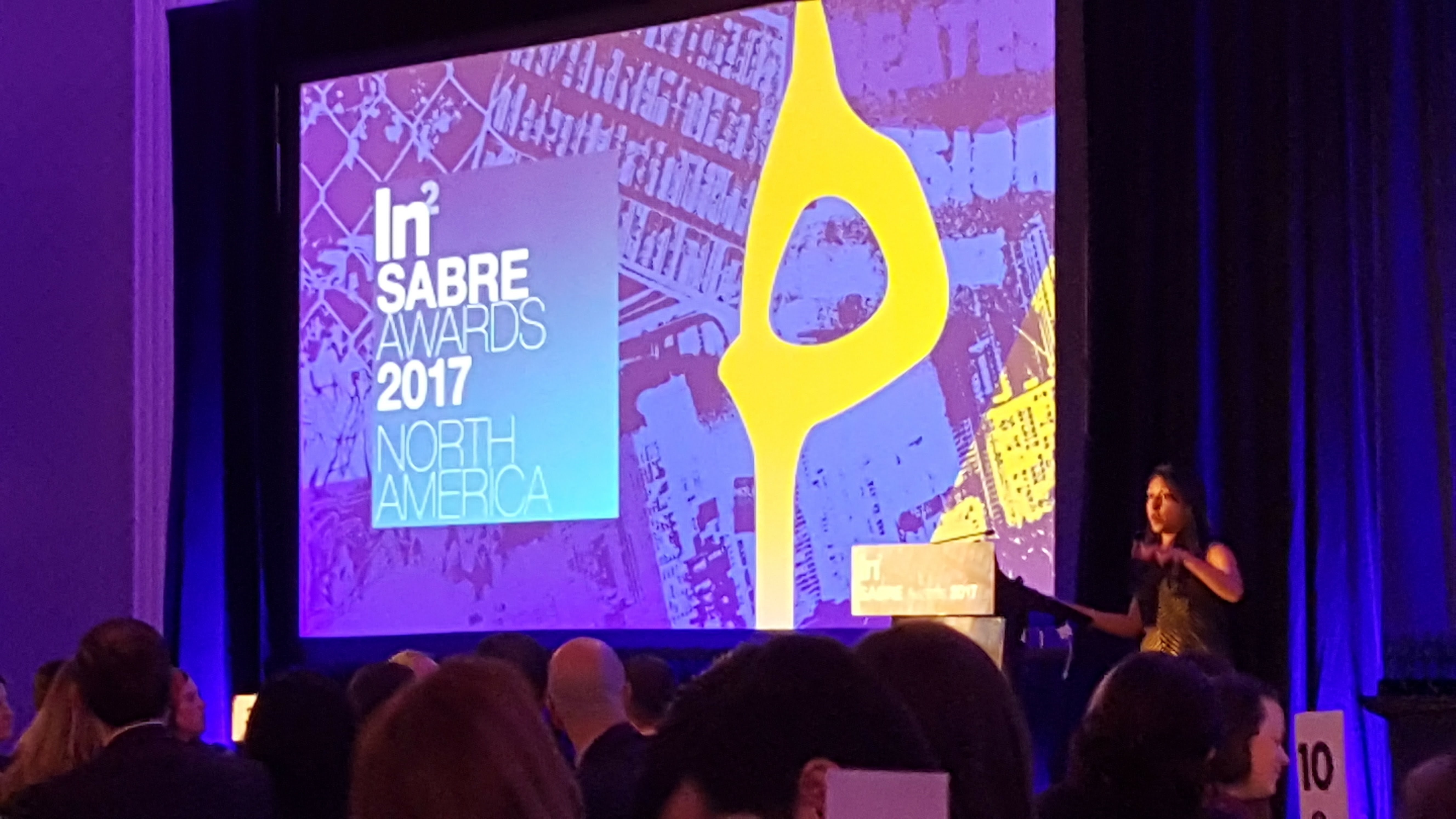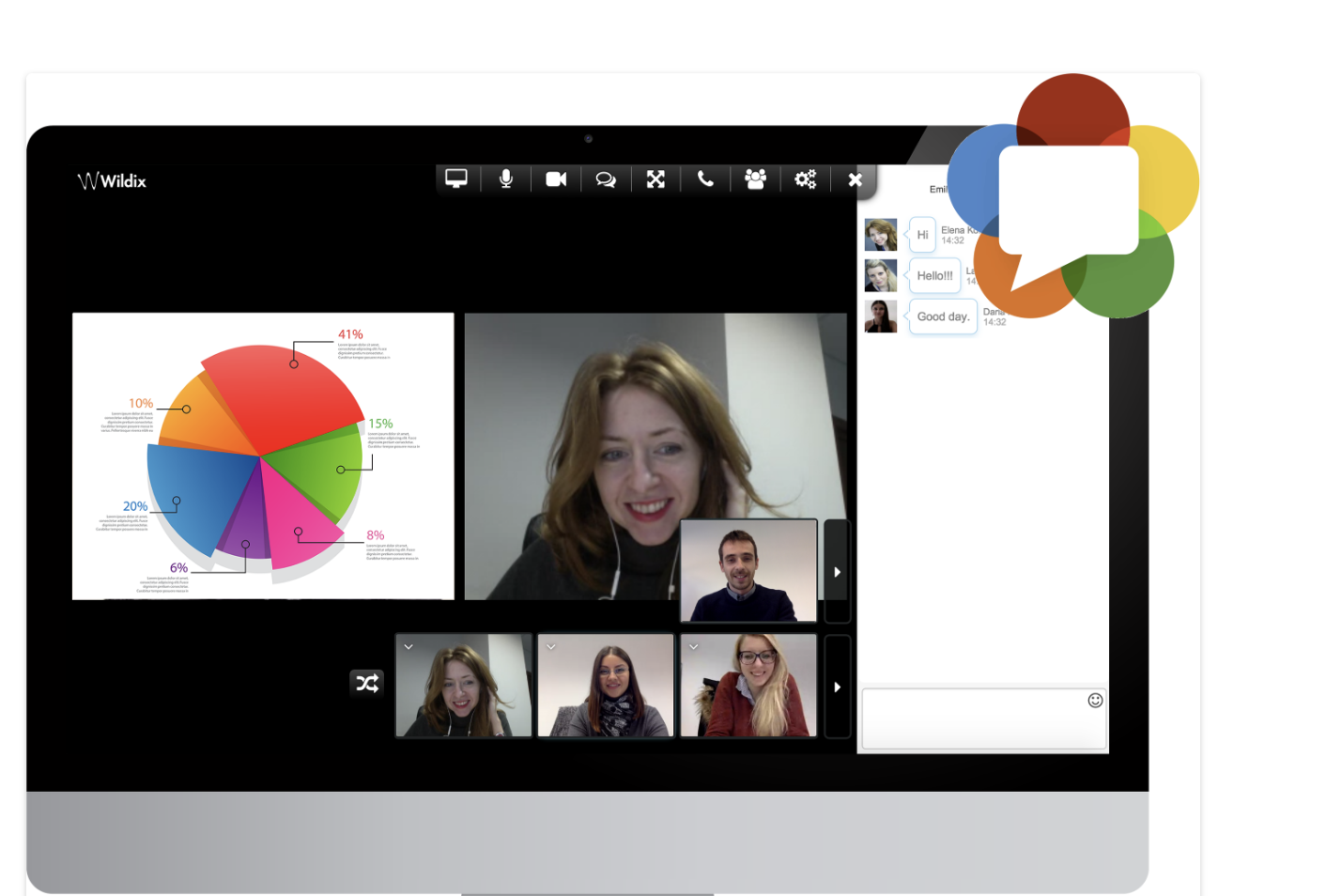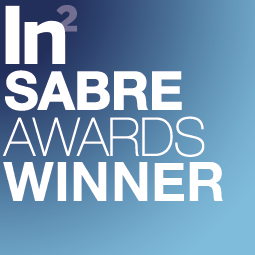Blog

In the bustling digital market, strategic communications stand at the heart of captivating influencer marketing campaigns, drawing audiences and brands closer than ever.
Understanding the Role of Strategic CommunicationsAt the core of every impactful influencer marketing campaign lies strategic communications—a deliberate approach to messaging that aligns with brand ethos, goals, and the target audience’s values. It’s the art of crafting and conveying the right message, to the right people, at the ideal time, through the most suitable channels.
Engaging with influencers who echo a brand’s values and resonate with its audience isn’t just happenstance; it requires intricate planning and a deep understanding of both the brand’s and the influencer’s platforms. Strategic communications serve as the blueprint for these partnerships, ensuring that every piece of content serves a purpose and moves the needle towards achieving set goals.
The Impact of Strategic Communications on Audience EngagementStrategic communications transform passive observers into engaged community members. Through well-defined messages and consistent narrative across platforms, influencers can foster a sense of belonging among their followers, turning engagement into a powerful tool for brands to amplify their reach and credibility.
It’s not just about the frequency of posts or the aesthetic appeal; it’s the relevance and resonance of the message that captures and retains audience interest. Tailoring communications to address the audience’s pain points, aspirations, and interests paves the way for genuine interactions and engagement.
How Strategic Communications Influences Brand ImageInfluencer marketing, powered by strategic communications, acts as a mirror reflecting the brand’s integrity, values, and commitment to its audience. A well-orchestrated strategy ensures that every message is coherent, reinforcing the brand’s image and positioning it favorably in the consumer’s mind.
The strength of a brand’s image in the digital space significantly depends on the authenticity and consistency of its messages. Influencers, serving as brand ambassadors, play a crucial role in this process, making strategic communications indispensable for maintaining and enhancing brand perception and trust.
The Synergy between Influencer Marketing and Strategic CommunicationsInfluencer marketing and strategic communications are two sides of the same coin. While influencer marketing focuses on leveraging key leaders to drive a brand’s message to the larger market, strategic communications ensure that this messaging is not just heard but resonates with its audience.
The synergy of these elements is what makes influencer campaigns more than just a series of posts. It’s about weaving a story that aligns with audience values, interests, and the brand’s goals, creating a cohesive, engaging narrative that speaks directly to the hearts of consumers.
Implementing Effective Strategic Communications in Your Influencer CampaignsImplementing effective strategic communications within influencer campaigns begins with meticulous planning and a keen understanding of the target audience. This involves selecting influencers whose followers exemplify the brand’s customer base and whose values align with the brand’s core message.
A critical aspect of this implementation is the development of a content strategy that guides the creation of engaging, relevant, and valuable content. Brands and influencers must work in tandem, employing tools like messaging templates, content calendars, and performance analytics to ensure that every piece of content serves the overarching strategic goals.
The Quintessence of Influencer MarketingIn wrapping up, it’s crystal clear that the success of influencer marketing hinges on the robust framework of strategic communications. As brands and influencers alike navigate the complex, ever-evolving digital landscape, prioritizing clear, coherent, and targeted communication strategies not only elevates brand image but also fosters genuine engagement and loyalty among audiences. The essence of influencer marketing thrives through skillful storytelling and meaningful connections, all made possible by strategic communications.

In the bustling city of Baltimore, standing out is key – and that’s where the expertise of local PR firms comes into play. Discover how they can transform your brand’s visibility and perception in today’s crowed marketplace.
Understanding the Role of Baltimore PR FirmsBaltimore PR firms specialize in crafting and disseminating your brand’s stories in a way that captivates and engages your target audience. Their deep understanding of the local media landscape and prevailing cultural nuances enables them to navigate effectively, ensuring your message hits home.
By leveraging their network of media contacts, these firms can secure valuable coverage for your brand, raising its profile and building credibility among consumers and industry peers alike. This visibility is crucial for establishing trust and fostering lasting relationships.
Benefits of Partnering with Baltimore PR FirmsPartnering with a Baltimore PR firm offers a host of benefits, including increased brand visibility, enhanced public perception, and improved media relations. However, the true value lies in their ability to navigate the complexities of the Baltimore market with precision and local insight.
These partnerships often lead to strategic placements in local media, targeted events, and community engagement initiatives that resonate deeply within the city. This localized approach not only amplifies your brand but also strengthens its roots within the community.
Beyond media relations, Baltimore PR firms excel in crisis management, ensuring that your brand can weather any storm with minimal reputational damage. Their proactive and strategic response can make all the difference in how a potential crisis is perceived by the public.
Choosing the Right Baltimore PR Firm for Your BrandSelecting the right PR firm in Baltimore goes beyond assessing portfolios and testimonials. It’s about finding a partner that understands your brand’s essence and objectives. Compatibility in vision and working style is key for a fruitful partnership.
Consider firms that offer a mix of creativity and strategic thinking, with a track record of success in your industry. Their local expertise should align with your brand’s needs, ensuring they can effectively navigate Baltimore’s unique media and cultural landscape.
Key Services Offered by Baltimore PR FirmsThe services offered by Baltimore PR firms are diverse, spanning from traditional press releases and media relations to digital marketing and social media management. Their holistic approach ensures every aspect of your brand’s communication strategy is covered.
Event planning and community engagement are also critical components, especially in a community-centric city like Baltimore. These firms can orchestrate events that not only highlight your brand but also imbue it with a sense of local pride and involvement.
Strategies for Working Effectively with Baltimore PR FirmsCommunication is the cornerstone of any successful partnership with a PR firm. Establishing clear goals, expectations, and lines of communication from the outset can pave the way for effective collaboration.
Success Stories: Brand Amplification by Baltimore PR FirmsNumerous brands have seen their profiles soar after partnering with Baltimore PR firms. From local startups to established businesses, these success stories highlight the transformative power of strategic PR in elevating brand visibility and engagement.
One notable example is a Baltimore-based tech startup that, through a targeted PR campaign, went from relative obscurity to being featured in top tech publications and TV segments, significantly boosting its brand recognition and customer base.
Measuring the Impact of a Baltimore PR Firm on Your BrandThe impact of a PR firm’s efforts can be measured through a variety of metrics, including media coverage, social media engagement, and website traffic. However, the qualitative impact, such as improved brand perception and stronger relationships with the community, is equally important.
Unlocking Brand Potential with Baltimore PR FirmsIn the end, the goal of any brand is to shine brighter than the rest, and with the right strategies, Baltimore PR firms hold the key to unlocking that potential. Whether it’s through media relations, social media, or innovative campaigns, these firms know how to tailor the perfect message that resonates with your audience and amplifies your brand’s presence both online and offline.

In today’s fast-paced digital landscape, the power of a message lies not only in its delivery but also in its ability to resonate with the audience. Creating content that speaks directly to your audience’s values, needs, and lives can transform your engagement rates. How can you craft messages that not only capture attention but also cultivate a deeper connection?
Let’s dive into the art and science behind boosting audience engagement.
Understanding the Psychology of Audience EngagementAt its core, engaging with an audience hinges on understanding the psychological triggers that prompt interest and interaction. Human beings are drawn to stories and messages that reflect their personal experiences or aspirations. By tapping into that familiarity and universal emotions such as joy, fear, anticipation, or curiosity, marketers can create messages that are more likely to resonate. Understanding the subtle nuances of your audience’s psychological profile can be the difference between a message that is ignored and one that sparks a meaningful connection.
The psychology of audience engagement also rests heavily on the principles of social proof and authority. When audiences see that others have engaged with a message or brand, they are more likely to feel a sense of trust and safety, making them more open to engagement.
Therefore, incorporating elements that showcase endorsement, such as testimonials or influencer partnerships, can significantly amplify your engagement efforts.
The Importance of Authenticity in MessagingIn a world filled with noise and constant distractions, authenticity cuts through the din to capture the heart of audience engagement. Authentic messaging is not just about being true to your brand’s voice; it’s about creating a transparent and honest dialogue with your audience. This means sharing not only your triumphs but also your struggles and learnings along the way—allowing your audience to see the real people behind the brand. When your audience feels connected to your brand’s story on a personal level, their loyalty and engagement naturally increase.
Crafting Your Message: Strategies for ResonanceCrafting a message that resonates begins with a deep understanding of who your audience is and what they care about. This understanding allows you to tailor your content to address their specific interests, challenges, and questions. An effective strategy involves speaking directly to the reader by using ‘you’ statements, which can make your message feel more personal and relevant. Additionally, utilizing storytelling techniques can help illustrate abstract concepts and make your message more memorable. Finally, always aim for clarity and simplicity—your message should communicate its value without requiring the audience to sift through jargon or complex explanations.
Leveraging Social Media for Enhanced Audience EngagementSocial media platforms offer unparalleled opportunities to increase audience engagement through direct interaction and community building. Whether it’s by hosting live Q&A sessions, creating interactive content like polls and quizzes, or simply responding to comments and messages, these platforms allow you to engage with your audience in real-time. Importantly, social media also enables content personalization at scale.
Read how employee advocacy drives engagement
By leveraging data on your audience’s behaviors, preferences, and engagement patterns, you can create highly targeted content that resonates on a personal level, thereby fostering deeper connections and loyalty.
Measuring the Impact of Your Engagement EffortsTo truly understand the effectiveness of your strategies, it’s essential to measure their impact. Key metrics such as engagement rates, click-through rates, conversion rates, and time spent on page can provide insights into how well your messages resonate with your audience. However, beyond these quantitative measures, qualitative feedback through comments, surveys, and direct interactions can offer invaluable insights into your audience’s perception and the emotional impact of your content. Regularly analyzing these metrics allows you to refine your approach and continuously improve your engagement efforts.
Elevating Audience ConnectionIn the quest to elevate audience engagement, the crafting of messages that resonate on a deeper level emerges as both an art and a science. Embracing authenticity, understanding your audience’s psyche, and engaging in strategic content creation are not just steps, but a journey towards creating a meaningful relationship with your audience. As you implement these insights and strategies, remember that the core of audience engagement lies in genuine connection and mutual value.
By focusing on the human element, your messages will not just reach your audience—they will move them.

In the political theatre of Washington, DC, the strategic placement and branding of executives can sway public opinion as powerfully as any policy or speech. In the context of public affairs and government relations, Executive positioning is the art and science of crafting a public persona that resonates with stakeholders, influences policy debates, and navigates the complex landscape of Capitol Hill.
Understanding Executive Positioning in the Political LandscapeIn the corridors of power in Washington, DC, executive positioning is not merely about public relations; it’s about shaping the narrative at the highest levels of government. From the way an executive communicates on social media to their appearances on Capitol Hill, every action contributes to the crafting of a public persona that can sway policymaking and public opinion.
This process is underpinned by a thorough understanding of the political and social currents that influence public opinion. It involves strategic decision-making about which issues to engage with, how to present oneself during public appearances, and the timing of speeches and statements to maximize impact.
The Impact of Executive Positioning on Public OpinionExecutive positioning can have a profound impact on public opinion, especially in a city as politically charged as Washington, DC. Through carefully crafted messages and public appearances, executives have the power to shape perceptions, influence opinions, and even sway the direction of policy debates.
Public perception is not static; it’s shaped by a myriad of factors including media coverage, social media discourse, and direct engagement with constituents. Executives who understand how to navigate these channels effectively can cultivate a positive image that resonates with the public and stakeholders alike.
Yet, the impact is a double-edged sword. Missteps in public appearances or messaging can lead to significant backlash, highlighting the high stakes involved in maintaining a positive public persona in the cutthroat environment of Washington, DC.
Strategies for Effective Executive Positioning in Washington, DCEffective strategies require a fine-tuned strategy that adapts to the ever-changing political landscape. This might include engaging with key stakeholders through targeted lobbying efforts, leveraging social media to communicate directly with the public, and making strategic public appearances to reinforce a leader’s image and policy agenda.
In addition, cultivating a strong network of allies within the media can amplify an executive’s message and ensure more favorable coverage. Executives must also be adept at crisis management, ready to respond to any negative press or public perception issues swiftly and decisively.
Case Studies: Successes and Failures in Executive PositioningSeveral high-profile case studies illustrate the power of executive positioning in shaping public perception in Washington, DC. For example, an effective media campaign and well-timed public statements might help an executive frame a contentious policy in a positive light or navigate a political scandal with minimal damage to their reputation.
Conversely, failures in executive positioning often stem from a misalignment between a leader’s public statements and their actions, or from poorly handled public relations crises. These cases offer valuable lessons on the importance of consistency, transparency, and strategic communication.
The Future of Executive Positioning in Political CommunicationAs the media landscape continues to evolve, so too will the strategies for executive positioning in Washington, DC. Future trends may include a greater reliance on digital and social media platforms for direct engagement with the public, as well as the use of advanced data analytics to tailor messages and strategies to specific audience segments.
Moreover, the increasing importance of authenticity in public perception suggests that executives will need to carefully balance strategic positioning with genuine engagement and transparency. As the public becomes more discerning and information more accessible, the skills required to effectively position oneself in the political arena will become ever more complex and nuanced.
The Ongoing Dance of InfluenceThe dynamic interplay between executive positioning and public perception in Washington, DC, underlines the importance of strategic communication in the political sphere. As executives continue to adapt to the evolving media landscape and societal expectations, their ability to shape policy and public opinion—through the deliberate construction of their personas and messages—remains a crucial factor in the success of their agendas.

In the heart of Washington, DC, where innovation meets policy, mastering public relations for AI companies emerges as a pivotal strategy. As AI technologies leap forward, they bring unique challenges and opportunities in PR. This guide is aimed at navigating the bustling crossroads of tech and communication, offering insight into delivering impactful PR for AI businesses in the political and tech-savvy environment of DC.
Understanding the Importance of PR for AI CompaniesIn the ever-evolving landscape of artificial intelligence, the importance of public relations (PR) cannot be understated. For AI companies, especially in a hub like Washington, DC, PR is not merely about promoting products, but about shaping perceptions, informing the public, and contributing responsibly to the discourse surrounding AI. The right PR strategy illuminates the benefits, addresses ethical considerations, and positions companies as thought leaders in this dynamic field.
Moreover, leveraging PR effectively allows AI businesses to navigate the complex regulatory landscape, ensuring their innovations are understood and welcomed by both policymakers and the public. This dual focus on promotion and education is crucial for building trust in AI technologies, a cornerstone for success in the industry.
How AI is Transforming the PR LandscapeArtificial intelligence is not just a topic for PR campaigns in the tech sector; it’s also a transformative tool within the PR industry itself. AI-driven analytics for understanding market trends, automated content creation, and personalized communication strategies are reshaping how PR professionals connect with audiences. These AI capabilities enable more targeted, efficient, and impactful PR campaigns, marking a significant shift in the tools and strategies at the disposal of communications professionals.
With tools like AI-powered sentiment analysis, PR teams can gain unprecedented insight into public perceptions, allowing for more nuanced and effective messaging. In a city like Washington, DC, where the pulse of technology and politics beats as one, harnessing AI in PR offers a competitive edge and aligns with the innovative spirit of the region.
Key PR Strategies for AI Businesses in Washington, DCTo maximize their impact, AI businesses in Washington, DC must adopt PR strategies that resonate with both the tech-savvy and the policy-oriented. This includes creating clear, jargon-free messages that explain the benefits and workings of AI technologies, engaging with policymakers to shape a supportive regulatory environment, and fostering community engagement to build advocacy and trust amongst the public.
Hosting thought leadership events, participating in policy discussions, and leveraging local media are also effective ways for AI companies to assert their presence and value in the Washington, DC ecosystem. These strategies not only enhance visibility but also build lasting relationships with key stakeholders in the tech and governmental spheres.
Crafting a Compelling AI Narrative: Tips and TricksA compelling narrative is crucial for AI companies, particularly in a landscape as competitive and scrutinized as Washington, DC. To stand out, businesses must craft stories that highlight innovation, address societal impacts, and showcase tangible benefits. This involves not just talking about the ‘what’ of AI, but the ‘why’ and ‘how’—explaining the motivations behind the technology and its potential to drive positive change.
Incorporating real-world examples, engaging visuals, and testimonials can make the AI narrative more relatable and convincing. Furthermore, being transparent about challenges and how they’re being addressed adds authenticity and trustworthiness to the company’s image.
Analyzing Successful PR Campaigns for AISuccess in AI PR often means looking at what has worked in the past and understanding why. Analyzing successful PR campaigns reveals common themes: clarity in messaging, a focus on ethical considerations, strong storytelling, and effective engagement with both media and stakeholders. These campaigns often manage to demystify AI, making it accessible and exciting to a broad audience, thereby raising awareness and support for AI technologies.
Leveraging Social Media for AI PR SuccessSocial media platforms offer invaluable channels for AI companies to amplify their PR efforts. Engaging content that educates, informs, and sparks dialogue can greatly enhance a company’s visibility and credibility. In Washington, DC, where the conversation often intersects with policy and public interest, social media provides a direct line to influential communities, allowing AI companies to participate actively in relevant discussions and showcase their contributions to the field.
Navigating PR Challenges for Emerging AI TechnologiesEmerging AI technologies often face skepticism and regulatory scrutiny, especially in politically active regions like Washington, DC. Addressing these challenges requires a proactive PR strategy that engages critics, clarifies misconceptions, and highlights ethical use. By fostering open dialogues, offering transparent insights into AI development processes, and emphasizing commitment to ethical standards, companies can navigate these hurdles effectively.
Elevating the ConversationNavigating the vibrant landscape of Washington, DC, with an effective PR strategy for AI, entails more than just understanding the technology—it’s about crafting messages that resonate on Capitol Hill as much as they do in Silicon Valley. It’s clear that the journey of mastering PR for AI intertwines deeply with being attuned to regulatory environments, societal impacts, and technological advancements. As we’ve explored, the essence of successful PR in this arena lies not just in speaking about AI but in communicating its transformative potential responsibly and engagingly.

In the high-speed world of digital marketing, Baltimore PR firms are carving out a niche, proving their worth beyond traditional boundaries. With a blend of old-school grit and digital savvy, these firms are redefining what effective marketing looks like in the digital era.
Understanding the Digital EcosystemThe digital ecosystem is a complex web of interconnections where content, audience engagement, and technology meet. Baltimore PR firms must master the intricate dance of influencing this environment, elevating their clients’ brands into the spotlight.
These firms leverage analytics and digital tools to understand market dynamics, craft strategies that resonate with target audiences, and predict future trends. This not only ensures campaigns are relevant today but also lays the groundwork for sustained relevance.
The Strategic Advantage of Baltimore PR FirmsBaltimore PR firms bring a strategic advantage to the table: a deep understanding of both local and global markets. Their localized insight, combined with a global perspective, allows for campaigns that are both authentically local and universally appealing.
Moreover, these firms must also excel in crisis management, a critical component in the volatile world of digital reputation management. Their proactive stance and strategic planning safeguard brands against potential crises.
Integrating Traditional and Digital: A Balanced ApproachThe true strength of Baltimore PR firms lies in their ability to leverage tactics like strong media relationships, thought leadership and precise messaging while integrating digital strategies. This balanced approach ensures that the tactile feel of physical events and traditional media complements the broad reach and precision of digital campaigns.
This approach not only broadens the scope of campaigns but also deepens the engagement with target audiences, creating a multi-dimensional brand experience that resonates on both a personal and digital level.
As we peel back the layers of modern marketing strategies, it becomes clear that Baltimore Public Relations firms hold a pivotal role in navigating the digital landscape. Their ability to integrate traditional PR virtues with cutting-edge digital tactics not only sets agencies like JMRConnect apart but also illustrates the evolving narrative of marketing success in the digital age.

In a world crowded with noise, viral marketing stands out as the beacon for DC-based companies aiming to cut through the clutter. It’s not just about making noise; it’s about making the right noise that amplifies your message across the vast digital landscape.
Understanding Viral Marketing and Its ImportanceViral marketing, a term that sparkles with the promise of rapid dissemination, refers to a strategy that encourages individuals to pass on a marketing message to others. This creates a potential for exponential growth in the message’s exposure and influence. For companies in DC, this strategy can be the golden ticket to standing out in a competitive market.
The essence of viral marketing lies in its ability to tap into the social networks of your audience, leveraging emotions and the innate human desire to share engaging content. It’s this powerful blend of psychology and technology that offers unrivaled opportunities for brand exposure.
Key Metrics to Track Viral Marketing SuccessMonitoring the success of a viral marketing campaign hinges on analyzing a slew of key metrics. Among these, engagement rates, reach, social shares, and conversion rates stand out as vital signs of a campaign’s health and effectiveness.
Furthermore, tracking brand sentiment and the speed at which a campaign spreads can provide deeper insights into the campaign’s true impact. For businesses in DC, refining strategies based on these metrics can pave the way for future viral successes.
Case Studies: Viral Campaigns from DC-Based CompaniesLet’s dive into a fascinating hypothetical case study. A DC-based company, leveraging its understanding of local culture and trends, launched a campaign that quickly caught fire. By creating content that resonated deeply with their audience’s identity and interests, their message spread like wildfire across social platforms.
The campaign’s genius lay in its subtle approach to promotion, preferring to ignite conversations rather than blatantly advertise. This strategy not only increased their brand’s visibility but also fostered a sense of community around their product.
Strategies for Crafting Your Viral Marketing CampaignCrafting a viral marketing campaign requires a cocktail of creativity, timing, and deep understanding of your target audience. Begin with a compelling story or concept that aligns with your brand identity and resonates with your audience’s values and interests.
Incorporate elements that encourage sharing – humor, inspiration, or jaw-dropping facts can all be powerful triggers. Getting the timing right, understanding the current social landscape, and choosing the right platforms for dissemination are also crucial for the viral potential of your campaign.
Lastly, don’t underestimate the power of collaboration. Partnering with influencers or other brands can amplify your message and reach audiences you might not have tapped into otherwise. Strategically, this can be a game-changer for DC companies looking to make a mark with their viral marketing efforts.
Understanding and leveraging viral marketing is more than a strategy; it’s an art form that, when mastered, can transcend the conventional boundaries of marketing. For DC-based companies, the journey into viral marketing is not just about achieving instantaneous results but about building a lasting impact that reverberates through their target audience.

Digital branding is all about how you show your brand online. It’s the look, the message, and the feel people get when they interact with your brand on the internet. Think of it like your digital handshake—first impressions matter. Why does it matter, you ask? Simple. In today’s world, almost everyone starts their search for anything online. If your digital presence doesn’t wow or at least catch the eye, you’re losing out on potential customers, followers, or fans right from the start. Plus, effective digital branding sets you apart from the sea of competition. It tells your story in a way that resonates with people, making them not just viewers but loyal supporters of your brand. So, getting your digital branding right isn’t just nice to have; it’s crucial if you want to thrive in the digital marketplace.
Setting Your Digital Branding ObjectivesBefore you dive into the digital branding pool, you gotta know why you’re jumping in the first place. Set clear, measurable goals. Ask yourself, what do you want to achieve? More sales, a bigger audience, or maybe you’re aiming to be the top dog in customer service in your industry. These goals will guide your strategy, telling you where to focus your energy. Remember, if you aim at nothing, you’ll hit it every time. Make these objectives smart - Specific, Measurable, Achievable, Relevant, and Time-bound. This isn’t just fluffy advice; it’s your roadmap. Without clear objectives, you’re just throwing stuff at the wall to see what sticks. And in the digital world, that’s a fast track to wasted time and cash. Keep these objectives front and center as you plan your digital branding strategy. They’re the beacon that keeps you on course.
Identifying Your Target Audience for Effective Digital BrandingUnderstanding who your audience is, is crucial for digital branding. You need to know who you’re talking to if you want your message heard. Start by laying out who your ideal customer is. Consider age, location, interests, and what problems they need solved. This guides what content you create, where you share it, and the tone of voice you use. For instance, younger audiences might prefer engaging, fast-paced content on platforms like Instagram or TikTok, while a professional audience could be more receptive to detailed articles or LinkedIn posts. By pinpointing your target audience, you shape your digital branding efforts to be more effective, ensuring that your message not only reaches the right ears but resonates with them.
Crafting a Memorable Brand Identity OnlineCreating a memorable brand identity online isn’t just about picking pretty colors or a cool logo. It’s about standing out and making sure people remember you for the right reasons. First off, know what makes you unique. Ask yourself, what can you offer that no one else can? That’s your starting point. Next, consistency is key. Your colors, logo, and messaging should be the same everywhere online - from your website to your social media. This makes you recognizable. Also, engage with your audience. Talk to them, listen to their feedback, and show that you value them. This builds a community around your brand. And don’t forget to keep an eye on what’s trending. Being adaptable and relevant keeps you in the game. But remember, while it’s good to be current, stay true to your brand’s core values. These steps will set you on the path to crafting a brand identity online that’s not just seen but remembered.
Utilizing Social Media for Digital Branding SuccessSocial media is the backbone of any digital branding strategy. It’s where people hang out, share ideas, and discover new favorites. To nail your digital branding on social media, first, identify the platforms your target audience loves. Are they scrolling through Instagram, tweeting away on Twitter, or diving deep into discussions on LinkedIn? Once you know where they are, engage with them. Post content that resonates with your audience, not just ads. Share stories, insights, and even behind-the-scenes glimpses of your brand. Interaction is key—reply to comments, participate in conversations, and even host live sessions to bring your brand to life. Remember, consistency is your friend here. Keep your brand voice and visual aesthetics uniform across platforms. This builds recognition and trust. Also, don’t overlook the power of influencer collaborations. A shoutout from the right person can skyrocket your brand’s visibility overnight. In short, be where your audience is, speak their language, and be genuine. That’s how you win at social media branding.
SEO Strategies to Boost Your Digital Brand PresenceSEO, or Search Engine Optimization, is key to making your digital brand visible and getting it to the top of search results. Here’s how to do it right. First, focus on keywords. Know what words people use to search for services or products like yours. Use these words on your website and in your content. But don’t overdo it. Stuffing your content with too many keywords can backfire. Second, create quality content. Content that answers questions, solves problems, or entertains your audience will more likely rank higher in search results. This includes blog posts, videos, and social media updates. Third, optimize your website. Make sure your website loads quickly, is easy to navigate, and is mobile-friendly. A slow or hard-to-use website can hurt your SEO ranking. Lastly, build backlinks. When other reputable sites link back to your website, it signals to search engines that your content is valuable, boosting your site’s credibility and position in search results. SEO is a marathon, not a sprint. Start with these strategies, and keep adjusting as you learn what works for your brand.
Content Marketing: A Key Component of Digital BrandingContent marketing is a big deal when we talk about digital branding. It involves creating and sharing online material – think blogs, videos, and social media posts – that doesn’t outright sell your brand but stirs interest in your products or services. It’s about giving your audience something valuable without asking for anything in return. Here’s why it’s crucial: nowadays, people crave authenticity. They don’t just want to see an ad and buy stuff. They want to learn, be entertained, and connect with the brands they choose. Content marketing lets you do that. It helps you appear more human and less like a faceless business. Plus, it’s good for your online visibility. Ever heard of SEO? Well, content marketing boosts your SEO efforts, helping your brand show up in search results when potential customers look for a service or product you provide. So, think of content marketing as your digital handshake. It introduces you to your audience, builds trust, and creates a path for them to follow back to your brand.
Leveraging Influencers to Enhance Your Digital BrandIn the digital age, influencers have become a key tool for branding. Think of them as turbo-charged word-of-mouth marketing. When you collaborate with influencers, you’re tapping into their audience - an audience that trusts them. It’s like having a friend recommend your product, but this friend has thousands or even millions of followers.
To make the most out of influencers, it’s not just about picking anyone with a large following. You want to ensure their audience aligns with your target market. It’s pointless to partner with a fitness influencer if you’re selling art supplies. Once you’ve found the right influencer, work on creating authentic content. Audiences can sniff out a forced advertisement from miles away. The goal is to have the influencer introduce your brand in a way that feels natural.
Remember, successful influencer partnerships are about building relationships. Treat influencers as part of your team, not just another advertising channel. This approach not only helps in creating more genuine content but can also foster long-term collaborations that keep your brand in the loop with potential customers. It’s a win-win.
Monitoring and Adjusting Your Digital Branding StrategyOnce you launch your digital branding strategy, it’s crucial to keep an eye on how it performs. You can’t just set it and forget it. To stay ahead, constantly monitor key performance indicators (KPIs) such as website traffic, engagement rates, and conversion rates. These metrics tell you if your strategy is hitting the mark or if it’s time to tweak some parts.
If you notice a dip in engagement or your goals seem further away, don’t sweat it. It’s all part of the game. Adjust your strategy based on the data you gather. Maybe your audience responds better to video content rather than lengthy blog posts, or perhaps a different social media platform aligns more closely with where your audience hangs out. Testing and tweaking are how you refine your strategy to ensure it resonates with your target audience.
Remember, staying flexible and open to change is key. Digital trends evolve, and so should your approach. By keeping a close watch and being willing to adjust your sails as needed, you’ll keep your digital branding strategy sharp and successful.
Conclusion: Key Takeaways from Expert Digital Branding TipsCrafting a digital branding strategy is critical for standing out online. From what we’ve gathered, remember these few, but powerful steps: First, know your audience like the back of your hand. Their needs, preferences, and behaviors are your roadmap. Second, consistency is king. Whether it’s your visual identity, message, or online interactions, keep them consistent across all platforms. This builds trust and recognition. Third, tell a story. People connect with stories, not sales pitches. Make your brand’s story engaging and authentic. Lastly, always analyze and adapt. The online world changes fast. Keep tabs on your strategy’s performance and be ready to tweak it as you go along. In this rapidly evolving digital landscape, staying flexible and informed is your best bet for success.

Corporate communications have transformed with the digital age. It’s all about how companies talk to the world now. In the past, it was press releases and TV ads. Today, it’s social media posts, blogs, and even working with influencers. This shift means businesses have to be clear, direct, and engaging. They need to tell their story in a way that resonates with people. The goal? Build trust and a strong brand image. Companies can’t just talk at people anymore. They need to talk with them, creating a two-way conversation. This approach helps businesses connect with their audience, making their message more relatable and effective. In the digital age, a solid corporate communications strategy is crucial for success.
The Rising Influence of Influencer MarketingInfluencer marketing is no longer just a trend; it’s a key player in the marketing game, especially for businesses in DC. This strategy uses the power of individuals with a strong online presence to drive your company’s message to the larger market. Why does it work? People trust people. When a well-known influencer shares something, their followers listen. Think of it like getting a recommendation from a friend. The stats back it up too. Most consumers say they trust social media influencers over traditional ads. It’s not just for the big players either. Small and medium businesses find influencer marketing approachable because it doesn’t require a massive budget. You’re paying for the influencer’s reach and credibility, not billboard space or airtime. From local food bloggers to DC tech gurus, finding the right influencer can put your brand in front of thousands, even millions, of engaged followers. And the best part? This strategy can be tailored to fit any business goal, whether it’s boosting brand awareness, launching a new product, or driving sales.
Understanding the Synergy Between Corporate Communications and Influencer MarketingCorporate communications and influencer marketing might seem like separate strategies, but together, they pack a powerful punch. Let’s break it down. Corporate communications is all about how companies talk to their customers, investors, employees, and the world. It’s the voice of the company. Influencer marketing is when businesses team up with popular folks on social media to promote their products or services.
Now, why do they work so well together? First off, influencers can give a human touch to corporate communications. Instead of a faceless company message, you have a real person talking about your product. This can make your message more relatable and trustworthy. Plus, influencers can reach people in a way traditional corporate communications can’t. They speak directly to their followers, who often look up to them. This means your message doesn’t just get out there; it gets heard.
By combining these two, you can communicate your company’s values and goals in a way that feels more personal and approachable. It’s about being where your audience is and speaking their language. Whether it’s through a tweet, a blog post, or an Instagram story, using influencers can help your message resonate more deeply with your target audience. And when done right, this synergy not only boosts your brand’s visibility but also builds a stronger connection with your customers.
Identifying the Right Influencers for Your DC BusinessFor DC businesses, tapping into influencer marketing is not about just any popular face, but about finding the right match. Think relationship, not just a transaction. Start by checking if the influencer’s followers look like your target audience. Are they local to the DC area? Do they engage with content that aligns with your business values? These are clues. Then, dive into the quality of engagement. It’s not just about the number of followers; it’s about how those followers interact with the influencer’s content. High engagement rates mean the influencer’s audience listens and trusts them. This trust can transfer to your business if the partnership feels genuine. Lastly, consider the influencer’s content style and quality. Does it scream creativity and professionalism? Your brand will be associated with whatever content they create. Make sure it’s a fit. Remember, the right influencer for your DC business is someone who brings authentic value to both you and their audience.
Crafting a Collaborative Strategy: Corporate Communications Meets Influencer MarketingWhen corporate communications team up with influencer marketing, it’s like mixing business with a bit of smart social buzz. The goal? To spread your brand’s message far and wide but in a way that feels personal, not preachy. Start simple. First, understand what your brand stands for and the story you want to tell. Then, find influencers who vibe with your values. These could be local heroes in DC or big names on social networks. Next, let’s talk collaboration, not dictation. Work together to create content that speaks to both your brand and their audience. Remember, it’s a two-way street. Their followers should see the genuine connection between the influencer and your company. Keep the conversation going. Engage with the content, respond to comments, and show some love on social media. This strategy gets your brand in front of eyes that might never have given you a second glance, in a way that’s relatable. So, bring corporate communications and influencer marketing together, and watch your brand story light up across DC and beyond.
Steps to Integrate Influencer Marketing into Your Corporate Communications PlanFirst off, know your brand and what message you want to tell. Your brand’s vibe and goals should be crystal clear. This step is crucial because it helps you find the right influencer who gels with your brand’s identity. Next, scout for influencers. Look for someone who not only has a big following but engages well with their audience. Engagement over numbers, always remember that. Then, interact with potential influencers. Start conversations. Comment on their posts. Make it natural, not salesy. After that, once you’ve picked an influencer, plan your campaign. What’s the goal? More brand visibility? Driving sales? Be clear and make sure the influencer understands what you aim to achieve. Next step, work out the nitty-gritty details. Talk about budgets, timelines, content expectations but keep it flexible. Influencers know their audience best, so give them creative freedom. Lastly, measure your campaign’s success. Look at the metrics that mattered the most to your goals. Was it engagement, sales, or brand mentions? Learn and tweak your next campaign based on these insights. Remember, it’s all about building relationships, with both the influencer and their audience. Keep it real, and keep it strategic.
Case Studies: Successful Influencer Marketing Campaigns for DC BusinessesIn DC, where the pulse of politics and business beats strongly, some businesses have turned influencer marketing into a winning strategy. Take, for example, a local restaurant chain that partnered with DC foodies on Instagram. By showcasing their meals in mouth-watering posts, they saw a 30% uptick in reservations within two months. Then there’s the fashion boutique that teamed up with a popular local lifestyle influencer. They launched a weekend pop-up event that nearly doubled their sales from the previous month. What made these campaigns successful? First, they chose influencers who resonated with their target audience. They weren’t just looking for anyone with a large following; they sought out personalities that matched their brand’s vibe and values. Second, they made sure the content was authentic. Rather than pushing for scripted mentions, they allowed influencers to create content that felt natural and engaging to their followers. Lastly, they leveraged local appeal. By focusing on DC’s unique culture and vibrancy, these businesses struck a chord with both residents and visitors. The takeaway? Influencer marketing, when done right, can be a powerhouse strategy for growing your business in the nation’s capital.
Measuring the Impact: KPIs for Your Influencer-Corporate Communications StrategyTo know if your influencer-corporate communications strategy is winning, you’ve got to measure it, right? Exactly. Keep an eye on Key Performance Indicators (KPIs), folks. First up, engagement rates. This is about likes, shares, comments - they all show if people are talking about your brand. Next, reach and impressions. How many saw the post? Are you hitting the numbers? Conversion rates are crucial too. How many from the crowd actually bought your product or signed up for your newsletter because of the influencer collab? Don’t sleep on brand sentiment. Is the chatter positive? Are people loving your brand more? Lastly, ROI (Return on Investment). The big one. Are you getting more bang for your buck? To wrap it up, track these KPIs, adjust your strategy if needed, and watch your DC business soar. Simple as that.
Overcoming Challenges in Influencer Marketing for Corporate CommunicationsWhen DC businesses dive into influencer marketing, they’re met with a few hurdles. First up, finding the right influencer. It’s not just about big followings; it’s about engagement and relevance. Your influencer’s audience should care deeply about what you offer. Then there’s trust. Building a genuine relationship between your brand and the influencer is crucial. Without trust, any collaboration feels hollow, lacking impact. Budgeting can be tricky, too. Costs vary widely, and higher price tags don’t always mean better results. It’s about smart investment, getting good value for your money.
According to the latest statistics, a staggering 87% of consumers have reported being influenced by an influencer’s recommendation when making a purchasing decision.
That said, measuring success can be complex. Likes and shares are easy to count, but how do you measure real influence, changes in perception, or actions taken? It requires setting clear goals and using the right tools to track them. Overcoming these challenges isn’t simple, but with patience and strategic thinking, DC businesses can certainly use influencer marketing to amplify their corporate communications effectively.
Conclusion: The Future of Corporate Communications and Influencer Marketing in DCAs businesses in DC continue to evolve, so will the strategies they use to communicate and market themselves. Corporate communications and influencer marketing stand out as powerful tools that, when combined, form a formidable strategy for any DC business aiming for success. The future of this blend lies in recognizing the immense value of authentic engagement. Brands that focus on creating genuine connections with their audience, through transparent communication and relatable influencer partnerships, will lead the pack. Moreover, adapting to new platforms and technologies will be crucial, as digital landscapes shift rapidly. Businesses must stay agile, ready to pivot their communication and marketing approaches as necessary. In essence, for DC businesses, the integration of corporate communications with influencer marketing is not just a trend but a necessary evolution. Those who master this synergy will not merely survive but thrive in the competitive market ahead.

In 2023, effective communication is more vital than ever for businesses wanting to stand out. Corporate communications is all about how companies talk to their customers, partners, and the world. It’s not just what you say; it’s how you say it and who hears it. This section will cover the basics, giving you a clear starting point. Think of corporate communications as your business’s voice. Whether it’s through social media, press releases, or internal memos, your goal is to make that voice clear, consistent, and strong. The right strategy can lift your brand’s presence, making sure you’re heard over the noise. We’ll dive into how this is essential for your brand’s success and outline strategies to amplify your message in 2023.
The Role of Digital Media in Corporate CommunicationsIn today’s digital age, mastering digital media is not just an option for corporate communications; it’s a necessity. Digital media encompasses all electronic devices and platforms used to convey information, including social media, websites, email, and mobile apps. Its role in corporate communications has grown exponentially, primarily due to its wide reach and the ability to engage directly with the audience. Let’s break it down. First, digital media allows corporations to share their story far and wide. Whether it’s showcasing achievements, sharing insights, or addressing concerns, companies can communicate their narrative on a global scale. Second, it offers real-time interaction. This immediacy fosters a sense of community and loyalty among consumers, as they feel heard and valued. Third, analytics play a crucial role. Digital platforms provide detailed data on audience behavior, enabling corporations to tailor their communications strategies effectively. Lastly, cost-effectiveness is a significant advantage. Compared to traditional media, digital platforms often offer more bang for your buck, allowing for targeted campaigns that reach the intended audience without breaking the bank. In essence, the power of digital media in corporate communications cannot be overstated. It not just amplifies a brand’s presence but also enables a more dynamic, immediate, and interactive relationship with the audience.
Developing a Unified Brand Voice Across All PlatformsHaving a consistent brand voice is crucial to making your brand recognized and trusted. Think of your brand as a person. Just like you’d recognize a friend’s voice in a crowd, your audience should identify your brand’s voice wherever they find it, be it on Twitter, your website, or a press release. To hammer this point home, imagine going through your friend’s social media and not being able to tell if the posts are indeed theirs because the tone keeps changing. Confusing, right? That’s how your audience feels when your brand’s voice fluctuates across different platforms.
First things first, identify your brand’s core values and personality. Are you professional and formal, or laid-back and casual? This character will be the foundation of your brand voice. Once that’s set, ensure everyone who creates content for your brand knows these guidelines. It might help to create a style guide that spells out your brand’s dos and don’ts in terms of language, tone, and even humor.
Remember, consistency is key, but so is flexibility. Your tone might slightly adjust depending on the platform (LinkedIn vs. Instagram, for example), but the underlying voice should remain unmistakably yours. That’s how you build a strong, cohesive brand identity that resonates with your audience no matter where they encounter you.
Importance of Transparency and AuthenticityToday, customers value honesty more than ever. They can spot insincerity from a mile away and tend to turn their backs on brands that don’t show their true colors. This is why transparency and authenticity are not just buzzwords—they’re crucial elements of successful corporate communications strategies. By being open about your business practices, admitting to mistakes, and sharing your brand’s journey, you create a bond of trust with your audience. This trust is the foundation on which loyalty is built. Remember, a loyal customer acts as a brand ambassador, sharing positive experiences with friends and family, essentially providing free marketing for your company. So, if you want to boost your brand’s presence in 2023, start by keeping it real. It’s simple - be honest, be you.
Integrating Social Responsibility into Your Corporate CommunicationsAdding social responsibility to your corporate communications isn’t just nice, it’s necessary. Today’s consumers expect companies to not only talk the talk but walk the walk. This means your business needs to actively engage in activities that benefit society. Whether it’s reducing your carbon footprint, supporting local communities, or ensuring fair labor practices, showing you care makes a difference. Here’s the kicker: when you share these efforts through your communications channels, your brand’s reputation gets a big boost. People love supporting businesses that do good. So, how do you start? First, identify causes that align with your brand values. Then, get involved in meaningful ways and talk about it - on your social media, in press releases, everywhere. Remember, being genuine is key. Don’t just do it for the likes. Do it because it’s right. This approach not only wins the hearts and minds of your audience but sets you apart from competitors. Integrating social responsibility isn’t a one-off task; it’s a continuous commitment that can redefine how the public perceives your brand.
Leveraging Influencer Partnerships for Enhanced Brand ReachTeaming up with influencers is a game-changer for getting your brand out there. Why? Because influencers have loyal followers who trust what they say. Picture this: when an influencer talks good about your product, it’s like getting a thumbs-up from a friend. Immediate trust boost. Now, getting started, it’s not about picking any influencer. You want someone whose vibe matches your brand. Think of it as matchmaking for business. A fitness brand? Partner with a fitness guru. Tech gadgets? Find a tech enthusiast. This alignment means their audience will likely dig your products too. Remember, it’s not just about having a huge follower count. Sometimes, micro-influencers, with followers in the thousands instead of millions, can get you more bang for your buck. Their followers are often more engaged and loyal. Plus, working with micro-influencers is usually more budget-friendly. So, influencer collaborations? Big potential for spreading the word about your brand. Choose wisely, make authentic connections, and watch your brand reach soar.
The Impact of Internal Communications on Employee AdvocacyGood internal communication is like oil in an engine; it keeps everything running smoothly. When employees understand what’s going on in the company, they feel valued and part of the team. This isn’t just good for morale—it turns them into brand advocates. Think about it. When people feel connected to their work, they’re more likely to talk positively about their company outside work. This boosts your brand’s presence without spending a dime on advertising. Plus, employees who are well-informed are your best bet for spreading the company’s vision and values authentically. So, investing in solid internal communication strategies isn’t just about keeping employees in the loop; it’s about empowering them to amplify your brand’s voice in their circles. Remember, a happy employee is your brand’s best spokesperson.
Utilizing Data Analytics for Tailored Corporate MessagingData analytics isn’t just a buzzword. It’s your secret weapon to create messages that resonate. By analyzing data, you can understand who your audience is and what they care about. This means you can craft messages that are spot-on, instead of shooting in the dark and hoping they land. Here’s the thing: nobody likes generic messages. We live in a world flooded with information, so personalization isn’t just nice to have, it’s expected. Use data analytics to segment your audience. Break them down by age, location, or even past purchasing behavior. Once you’ve got those segments, tailor your messages to speak directly to each group’s interests and needs. For example, younger audiences might respond better to messages that are snappy and delivered via social media, while an older demographic might appreciate more detailed information and emails. The bottom line? Use the data. It tells you what your audience likes, and then use that knowledge to talk to them in a way that makes them feel understood. It turns your messages from noise into music to their ears.
Crisis Management Strategies for Today’s Digital WorldIn today’s fast-paced digital world, a crisis can spread like wildfire across social media and news outlets. That’s why having a solid crisis management strategy is non-negotiable for brands. First, always be prepared. Have a crisis communication plan in place before you need it. This means identifying potential crises and crafting response templates in advance. Second, when a crisis hits, speed is key. You must acknowledge the situation swiftly to control the narrative. This doesn’t mean rushing out an unthought response but rather quickly letting your audience know you’re aware of the issue and are handling it. Third, transparency is crucial. In the digital age, attempts to hide information or mislead the public can backfire spectacularly. Be honest about what happened, what it means for your stakeholders, and what steps you’re taking to resolve the issue. Fourth, monitor the situation closely. Use social media and other online platforms to keep an eye on public sentiment and the spread of information. This will help you adjust your strategy as needed. Lastly, learn from the crisis. Once it’s over, analyze what happened and why. Use these insights to strengthen your crisis management plan and prevent future occurrences. Remember, in the digital age, it’s not about if a crisis will happen, but when. Being prepared can make all the difference.
Conclusion: Building a Resilient Corporate Communications StrategyIn the end, boosting your brand’s presence isn’t just about shouting louder than everyone else. It’s about crafting a resilient corporate communications strategy that can adapt to changes and resonate with your audience. Remember, the core of a strong strategy involves understanding your target, clear messaging, engagement, measuring effectiveness, and being ready to pivot when necessary. By integrating these elements, your brand doesn’t just talk at people but starts meaningful conversations that build lasting relationships. The journey to enhancing your brand’s presence is ongoing, but by focusing on these strategies, you’re setting a solid foundation for success. Keep it straightforward, keep it relevant, and always be prepared to listen and adapt.

In today’s fast-paced world, businesses need to nail their communication strategy. That’s where PR tools come in, playing a vital role. Think of PR tools as your megaphone in a crowded marketplace. They help you shout louder, reach farther, and connect better. These tools aren’t just about sending out press releases anymore. They’ve evolved. Now, we’re talking about software that manages social media, tracks your brand’s mentions across the web, analyzes your outreach efforts, and so much more. In short, PR tools are the Swiss Army knife for any communication professional. They streamline your efforts, making sure your message not only leaves your desk but also lands exactly where you want it to—in the hearts and minds of your audience. Without these tools, you’re just whispering into the void, hoping someone pays attention. With them, you create ripples that can turn into waves. So, let’s dive into why these tools aren’t just nice to have; they’re a must-have in your strategic communication arsenal.
The Role of PR Tools in Building Brand ImagePR tools are game-changers in shaping how people see your brand. They help you spread your message far and wide, ensuring it’s consistent, convincing, and captivating. Think of your brand image as a puzzle; PR tools are the pieces that make the whole picture clear and appealing. Using the right tools lets you control the narrative, highlight your strengths, and swiftly address any concerns that might tarnish your image. They enable you to reach your target audience through the right channels, at the right time, with messages that resonate. Whether it’s social media, press releases, or engaging influencers, each tool plays a pivotal role in solidifying your place in the market and in the minds of consumers. Essentially, they’re not just tools; they’re your allies in building a strong, trustworthy brand image.
How PR Tools Drive Effective Media RelationsPR tools are the backbone of media relations. They help you stay organized, track your results, and build stronger relationships with journalists. With these tools, you can easily send out press releases, monitor media coverage, and engage with your audience on social media. This way, you’re always on top of your game, making sure your message reaches the right people. Think of PR tools as your compass in the vast sea of media. They guide your strategy, ensuring you’re heading in the right direction. Whether it’s finding the perfect journalist for your story or analyzing the impact of your media coverage, PR tools equip you with the insight you need to make informed decisions. They transform guesswork into a tactical game plan. So, if you’re looking to amplify your media relations efforts, investing in the right PR tools is a no-brainer.
The Importance of Analytics and Measurement in PRIn PR, understanding the impact of your campaigns is not just nice to have; it’s crucial. Analytics and measurement are the compass and map in the world of public relations. They help you know if you’re moving in the right direction and how far you’ve come. Without these tools, you’re navigating blind. Imagine launching a campaign and having no idea how many people it reached, how they felt about it, or if it changed any minds. That’s operating in the dark. Analytics light up the path. They show you which messages resonate with your audience and which channels are most effective. Measurement goes further, quantifying your efforts. It can reveal, for instance, that your latest press release led to a 20% spike in web traffic or that social media engagement has doubled since your last campaign. Essentially, without the insights provided by analytics and measurement, improving your PR strategies becomes a game of guesswork. You don’t know what worked, what didn’t, or why. Using these tools, you can fine-tune your approaches, justify your budget, and, importantly, demonstrate the value of your work to stakeholders. So, ignoring analytics and measurement in PR isn’t just an oversight; it’s a missed opportunity to drive your strategies with precision and confidence.
Enhancing Social Media Engagement with PR ToolsPR tools aren’t just fluff; they’re your best bet for getting noticed on social media. Think of them as a secret weapon. They help you track what people say about your brand, find influencers who can shout out your name, and even help you figure out the best time to post content. With the right PR tool, you’re not just throwing posts into the void and hoping for the best. You’re making every tweet, every Instagram story, and every Facebook post count. They turn the overwhelming chaos of social media into something you can manage and excel at. For instance, using a scheduling tool lets you plan your posts when most of your audience is online, not just when you remember to post. And analytics? They show you which posts hit the mark, so you can do more of what works and less of what doesn’t. It’s about getting smarter with your efforts. So yes, investing in a PR tool might just be the game-changer for boosting your social media engagement.
Content Management: Organizing and Distributing InformationIn the realm of strategic communications, content management stands as a pivotal process. It’s all about how we organize and distribute the information that our audience consumes. Without a streamlined system, crucial messages could get lost in the noise, making your efforts feel like shouting into the wind. PR tools come into play by offering a robust framework to keep everything in check. They allow teams to strategically curate, categorize, and disseminate content across various channels, ensuring that the right message reaches the right audience at the perfect time. This is no minor feat, considering the sheer volume of information shared daily. By leveraging PR tools for content management, organizations can craft coherent narratives, maintain consistency in their messaging, and significantly boost their visibility in a crowded marketplace. It’s like having a well-oiled machine where every piece of content, no matter how small, plays a critical role in the larger strategy. This methodical approach not only maximizes impact but also streamlines workflows, leading to more efficient and effective communication efforts. So, if your goal is to cut through the clutter and make your voice heard, understanding and implementing sound content management practices through PR tools is not just advantageous — it’s essential.
Crisis Management: Preparing and Responding with PR ToolsWhen a crisis hits, it’s like a storm rattling your organization’s windows. The right PR tools turn you into a skilled weatherman, predicting storms and fortifying your house ahead of time. Here’s the skinny: without PR tools, you’re basically shouting into the wind, hoping someone hears you over the howl. With them, you control the narrative.
Preparing means having software that monitors social media and news, keeping an ear to the ground for any whisper of trouble. It’s about crafting messages in advance for a range of scenarios so that you can respond swiftly. Imagine having a toolbox where every tool is precisely what you need to fix a specific problem. That’s your PR software during a crisis.
Responding with PR tools means hitting ‘send’ on those pre-made messages, tweaking them as the situation unfolds. It’s about using analytics to see how your message is being received and adjusting your strategy in real time. Ever played a video game where you have to adapt to survive? It’s like that, but the stakes are real.
In both preparing and responding, the goal is to maintain your organization’s integrity and public trust. Think of PR tools as your shield and sword, defending your reputation and cutting through the noise to deliver your message clearly. Without them, you’re entering the battlefield unarmed.
Case Studies: Success Stories Using PR ToolsBig names and smart startups have one thing in common: they use PR tools to make waves. Take Airbnb as an example. Before becoming the giant it is today, Airbnb turned to strategic PR moves that involved unique listings and experiences that got everyone talking. They crafted stories that media outlets couldn’t resist, boosting their visibility without the high costs of traditional advertising. Another success story is Dropbox. They opted for a simple but effective PR tool: referral incentives. By offering extra storage for both the referrer and referee, Dropbox’s user base skyrocketed. These incentives were a PR masterstroke, creating a buzz and driving massive user engagement without splurging on ads. These case studies prove that with the right PR tools, even simple strategies can yield outsized results. It’s about creativity, understanding your audience, and leveraging tools that turn heads. That’s the secret sauce of effective strategic communications.
Integrating PR Tools into Your Communication StrategyIntegrating PR tools like employee advocacy into your communication strategy is a smart move. These tools help you manage your public image and ensure your message reaches the right audience. This isn’t just about sending out press releases anymore. Think bigger. Social media management, content creation platforms, analytics software, and email marketing services are all part of the PR toolkit now. Why? Because they offer you direct channels to your audience, ways to craft compelling narratives, track how your content performs, and tweak your strategy in real time. Imagine you’re trying to build a house. PR tools are your hammer, nails, and blueprint. Without them, you’re just sitting on a pile of wood, hoping it’ll turn into a home. Start by identifying your goals. What message are you trying to spread? Who needs to hear it? Once you’ve got that down, choose tools that fit those needs. Maybe you start with a social media scheduler to keep your posts consistent. Then, add analytics to see what’s hitting the mark. Keep it simple at first. As you get more comfortable, you can add more sophisticated tools to your arsenal. Remember, the goal isn’t just to talk at your audience. It’s to engage with them, understand their needs, and respond effectively. PR tools make this a heck of a lot easier.
Conclusion: The Future of PR Tools in Strategic CommunicationsAs we peer into the future of strategic communications, it’s clear that the role of PR tools is not just important—it’s indispensable. The landscape of media and public relations is evolving at breakneck speed, driven by digital innovation and changing consumer behaviors. PR tools are at the forefront of harnessing these changes, enabling professionals to craft and disseminate messages more efficiently and effectively than ever before. The days of relying solely on traditional media outlets are fading, making way for a more dynamic, interactive approach to engaging with audiences. With the ability to analyze data, monitor brand mentions across the web, and automate repetitive tasks, PR tools provide a competitive edge that is hard to match. As we move forward, those who embrace these tools will find themselves well-equipped to navigate the complexities of today’s media landscape, ensuring their message not only reaches its intended audience but resonates with them. Therefore, investing in and understanding PR tools isn’t just advisable; it’s essential to staying relevant and achieving success in the realm of strategic communications.
In the rapidly evolving cannabis industry, public relations (PR) strategies that stand out are not just beneficial—they're essential. Among the most effective ways to amplify your brand’s voice in this crowded market is by tapping into the burgeoning world of podcasting. Podcasts offer an intimate, engaging platform to share your story, connect with cannabis enthusiasts, and position your brand as a thought leader. However, engaging podcasters in the cannabis space requires a nuanced approach, one that respects the unique landscape of cannabis culture and the legal intricacies it navigates.
Understanding the Cannabis Podcast LandscapeFirstly, it's vital to recognize that cannabis-themed podcasts operate within a spectrum. On one end, there are shows focused on the horticultural aspects of cannabis, aimed at growers and cultivators. On the other, tech-focused podcasts explore innovations in cannabis technology, from cultivation tech to consumer gadgets. Then there are lifestyle podcasts, which cater to a broader audience, including cannabis enthusiasts interested in culture, legalization news, and entertainment.
To effectively engage podcasters, you must first identify where your brand fits within this spectrum. Tailoring your pitch to align with a podcast's specific focus not only increases the likelihood of engagement but also ensures that your message reaches the most relevant audience.
Crafting Your PitchWhen reaching out to podcasters, personalization is key. Generic, mass-produced pitches are less likely to resonate. Instead, take the time to listen to several episodes of the podcast and understand its tone, format, and audience. Use this information to explain why your brand or story is a good fit.
Here are a few tips for crafting your pitch:
Highlight What Makes You Unique: Whether it’s your sustainable growing practices, innovative technology, or unique brand story, make sure to convey what sets you apart from others in the cannabis space. Offer Value: Consider what you can offer that adds value to the podcast and its listeners. This could be insights from your industry experience, exclusive data, or an interesting angle on current cannabis trends. Be Mindful of Legal Considerations: Given the legal complexities surrounding cannabis, ensure that your pitch respects the boundaries of what content creators can discuss or promote.Building Relationships with Podcasters
Beyond the pitch, building genuine relationships with podcasters can yield long-term benefits. Attend industry events, engage with podcasters on social media, and consider collaborating on content beyond podcast episodes. Showing support for the cannabis podcasting community can help position your brand as an active participant in the industry, rather than just another business looking for publicity.
Leveraging Your Podcast AppearancesOnce you’ve secured a podcast appearance, it’s important to maximize its impact. Promote the episode across your own marketing channels, engage with listeners who comment or ask questions about your segment, and consider repurposing your podcast content for other platforms, such as blog posts or social media snippets.
ConclusionEngaging with podcasters in the cannabis space offers a unique opportunity to connect with your target audience in a meaningful way. By understanding the landscape, crafting thoughtful pitches, and building genuine relationships, your brand can harness the power of podcasting to amplify its voice. Remember, success in cannabis PR is not just about getting your story out there—it’s about ensuring it resonates with the right people.

Corporate communications is all about how a company talks to the world, including its employees. It’s how they pass information, promote their brand, and keep everyone in the loop about what’s going on. With technology evolving, the way companies communicate has taken a big leap forward. Gone are the days of just emails and memos. Now, we’ve got social media, instant messaging apps, and video calls making communication faster and more interactive. This shift is changing the game, making it easier for companies to share news, handle crises, and stay connected with their audience and team members no matter where they are. It’s important to keep up with these changes because they’re setting the standard for how businesses operate and engage with people today.
The Role of Technology in Shaping Modern Corporate CommunicationsTechnology is revolutionizing how businesses talk to the world and to each other. Long gone are the days of waiting for snail mail or fax updates. Email, instant messaging, and social media platforms have made communication immediate and more interactive. Video conferencing lets us have face-to-face meetings without the need to travel, breaking down geographical barriers and saving tons of time. Cloud-based tools enable seamless collaboration on documents and presentations, ensuring that teams can work together in real time, no matter where they are. All these advancements mean decisions are made faster, ideas are shared more freely, and the collaboration has never been easier. Essentially, technology has made corporate communication not just a function, but a cornerstone of modern business strategy.
Key Technologies Revolutionizing Corporate CommunicationsTechnology has kicked corporate communications into overdrive, and here’s how. Social Media Platforms have turned into a powerhouse for real-time engagement, making companies more accessible to their audience. Then, there’s Collaboration Software like Slack and Microsoft Teams. These tools break down the walls within an organization, promoting seamless interaction across departments. Cloud Computing is another game-changer, allowing for easy access to data and applications, anywhere, anytime, which is perfect for the modern, mobile workforce. Artificial Intelligence and Chatbots are providing a 24⁄7 communication line, handling inquiries and offering solutions without a blink. Lastly, Video Conferencing Tools have redefined face-to-face meetings, making distance a trivial matter. Each of these technologies is reshaping how companies talk, listen, and connect, making every interaction more immediate, engaging, and insightful.
The Impact of Social Media on Corporate MessagingSocial media has completely changed how companies talk to us. Gone are the days when our only source of company news was through press releases or official announcements. Now, one tweet or Instagram story can give us the scoop on what’s new and happening. This shift holds power - both good and bad. On the bright side, companies can now chat with us directly, making everything feel more personal and immediate. They can share their wins, tell us about new products fast, and get our feedback right away. But, there’s a flip side. A small mess-up on social media can spiral into a huge problem for a company’s image in just hours. Plus, with everyone on social media, companies have to be on their toes 24⁄7, ready to jump into conversations or put out fires at any moment. This new reality means companies have had to up their game. They’re not just sending out messages; they’re engaging, listening, and adapting based on what they learn from us on social media. It’s a whole new world for corporate communication, and it’s moving fast. Companies that can ride this wave well find themselves building stronger relationships with us, their audience. The ones that can’t? Well, we all see how quickly tides can turn on social media.
Virtual Reality and Augmented Reality: New Frontiers in Corporate CommunicationsVirtual Reality (VR) and Augmented Reality (AR) are stepping stones into uncharted territories of corporate communications. These technologies have bulldozed the traditional barriers, making room for immersive experiences. Imagine holding a product prototype in your hand without it physically being there or walking through an office on the other side of the globe without leaving your home. That’s the power of VR and AR. Companies are using VR for training employees in lifelike scenarios without the real-world risks. AR, on the other hand, overlays digital information onto the real world, enhancing understanding and engagement. For example, an AR app can project product specs directly onto the equipment you’re fixing or planning to buy. These technologies are not just fancy gadgets but essential tools that reshape how we communicate, learn, and make decisions in the corporate space. They break down complex concepts into understandable experiences, making information not just seen but felt. And let’s not forget, they make meetings more than staring at faces on a screen; they turn them into shared virtual adventures. This leap into VR and AR in corporate communications is more than a trend; it’s a new foundation being laid for the future of interaction, training, and decision-making in businesses worldwide.
Artificial Intelligence and Machine Learning in Corporate CommunicationsArtificial Intelligence (AI) and Machine Learning (ML) are turning corporate communications on its head. Here’s the scoop. These technologies help companies figure out the best ways to talk to their customers and employees. AI can analyze vast amounts of data from social media, emails, and other communication channels to pinpoint trends. This means companies can craft messages that hit the mark every time.
Machine Learning goes a step further by learning from past communications. It gets smarter over time, fine-tuning messages to be even more effective. For example, if an email campaign didn’t get the response hoped for, ML can tweak future messages to get a better reaction. This isn’t just guesswork; it’s data-driven communication at its best.
Plus, AI-powered chatbots are now a thing. They can handle customer queries round the clock, providing instant responses. This boosts customer satisfaction and frees up human employees to tackle more complex tasks.
In summary, AI and ML are not just buzzwords. They’re powerful tools that are reshaping how companies talk to the world. And the best part? They’re getting better every day.
The Rise of Mobile Communication PlatformsMobile communication platforms have blasted onto the scene, revolutionizing how companies talk both internally and externally. Gone are the days when emails were the go-to. Now, it’s all about instant messaging, video calls, and shared workspaces. Platforms like Slack, Microsoft Teams, and Zoom are leading the charge, making communication faster, more efficient, and surprisingly, more human. The beauty of these platforms? They put everyone just a tap away, breaking down the traditional barriers of time zones and office walls. Teams can collaborate in real-time, share files on the fly, and stay connected like never before. This shift isn’t just convenient; it’s becoming essential in our fast-paced, digital-first world. Whether you’re working from home, the office, or halfway across the globe, the message is clear: mobile communication platforms are here to stay, and they’re reshaping the fabric of corporate communication.
Integrating Big Data and Analytics into Corporate StrategiesIntegrating big data and analytics into corporate strategies is like giving your team superpowers. With the right data, companies can make smarter decisions, understand their customers better, and spot trends before they become obvious to everyone else. Think about it as having a crystal ball. By analyzing large amounts of data, businesses can predict customer behavior, improve products, and even create new services that meet emerging needs.
Here’s the kicker: it’s not just about having the data. It’s about knowing what to do with it. Companies need to invest in powerful analytics tools and hire or train data experts who can make sense of the numbers. This combination helps businesses to not only gather data but also to interpret it in ways that can guide strategic decisions.
For example, a retail company might use big data to analyze shopping patterns, helping them to stock items that are likely to sell well and phase out those that aren’t. Likewise, a streaming service might analyze viewing habits to suggest shows or movies you’re more likely to enjoy.
In short, integrating big data and analytics is a game-changer for corporate strategies. It allows companies to be more agile, predictive, and responsive to changes in the market or customer preferences. And in today’s fast-paced world, that’s not just nice to have; it’s essential.
Challenges and Considerations in Adopting New TechnologiesJumping on the tech bandwagon in corporate communications isn’t always straightforward. Companies face real challenges and must weigh several considerations. First, there’s the cost. Implementing new technology can be pricey, involving not just the initial outlay but also ongoing expenses like training and maintenance. Then there’s the learning curve. Employees need time to get up to speed with new tools, which can slow things down at first. Compatibility issues can also arise, making it tricky to ensure new tech works smoothly with existing systems. Security is another big concern. New technology opens new doors for cyber threats, demanding robust security measures. Finally, there’s resistance to change. Not everyone is eager to abandon familiar processes for unknown tech, no matter how promising it might seem. Adopting new technology in corporate communications is a balancing act, requiring careful consideration of these challenges.
The Future of Corporate Communications: Trends and PredictionsThe future of corporate communications is bright, with technology steering the ship. Here’s a straightforward look at what’s coming. First, expect artificial intelligence (AI) to play a bigger part. AI can create personalized content for internal and external audiences, making communications more relevant. Then, there’s augmented reality (AR) and virtual reality (VR). These tools can bring a new level of engagement, making remote meetings feel like you’re in the same room. Don’t forget about instant messaging platforms evolving to become key internal communication tools, cutting down email overload. Social media will also change, becoming a primary channel not just for marketing, but for real-time corporate communication. Finally, data analytics will help us understand the impact of our communications like never before, ensuring messages hit the mark. In summary, expect communications to get more personal, immersive, and data-driven. These trends are not just predictions; they’re the direction we’re heading, driven by technology’s incessant march forward.

PR Case study: Steps to get your content read, viewed and remembered
https://youtu.be/LsxlmhBPoE0 Shaping Influence®: Connecting brands with target audiencesInfluencer communications is a concept that eludes many of our fellow flacks and marketers, for whom the inability to prove a campaign's value and financial worth is increasingly problematic. Believe it or not, some companies are okay with that, and results that hover close to the status quo. They're complacent, led by managers who care just enough to make sure current strategies perform close to expectations.
While results bordering a notch or two above grossly underwhelming may merit a participation trophy, empowered brands have a shaping influence on the marketplace that can be measured.
Influencers: Engagement or Communications?Influencer Communications is a 360-degree approach to communications and marketing. Combining tried and true marketing methods with multichannel engagement ensures that the right messages reach the right person at the right time. While you might not be leveraging celebrity or micro-influencers of any type right now, there are some high-value candidates walking your hallways, working at the next cubicle, and sitting across from you in meetings.
It’s your own employees. Why Social Selling is so successful Employee Advocacy & Social Selling on LinkedInWhere traditional marketing relies on sponsored posts, re-marketing, paid placements and ads, Influencer Communications are organic and tap into the existing social reach of your workforce - from the C-Suite on down.
Smart companies are hiring sales and biz dev people that take full advantage of LinkedIn, Twitter, MeetUp Groups and Facebook to keep in touch with former, current and potential customers, agents and potential partners.
It boggles my mind - really - how such a powerful tool is so tragically underutilized. People from all departments can positively influence perception, and communications and marketing teams can measure the value of their engagement.
Posts from corporate accounts are necessary, and for the most part, serve a distinct purpose. But when friends and trusted colleagues recommend an article, case study or research report, it's personal. Authenticity counts, and every click, like, and share helps populate evergreen newsfeeds with your brand's messages.
Influencer Communications need as many people as possible in your company to get involved. Your executives, business development team and anyone else that drives day-to-day operations are directly (or indirectly) connected to your target audience.
Influencer Communications First StepsInfluencer Communications begins with content that your brand ambassadors can leverage.
Content type and message can vary depending on your industry and target customer. Some popular choices include multimedia, infographics, video testimonials and case studies, white papers, blogs, etc, In most cases, it’s considered best practice to develop assets that fall into all of these categories.
The more assets you have, the better your chances that employee advocacy and brand ambassador campaigns will move the proverbial needle. With some planning, building a cache of assets can be done quickly. For example, marketers can dissect a single case study into a variety of photos, videos, blogs and other repurposed assets.
Employee Advocacy with CEI: JMRConnect's award-winning platformAs you’re developing your assets, be mindful of the methods by which you plan to use them. The many social media platforms will become an integral part of your plan. Analyzing your target audience will tell you which you should be using — and avoiding. If your target audience isn’t using Instagram, it might not make sense to produce many photo-based assets.
As I mentioned in a previous article, LinkedIn is an essential medium of B2B marketing. Hubspot found that traffic from LinkedIn generated the highest visitor-to-lead conversion rate at 2.74 percent, almost three times (277 percent) higher than Twitter (.69 percent) and Facebook (77 percent). If your company has any focus on B2B transactions, it would behoove you to focus on developing blogs and thought leadership articles that can be shared on LinkedIn.
Facebook is also a very powerful messaging medium. In a study conducted by Facebook, Unicorn: A System for Searching the Social Graph, the company indicated that the average Facebook user has approximately 130 friends. Leveraging those friends of your employees, and their friends, can have an exponential effect in spreading your message.
Inform & Educate: Bridge the Gap Between Sales and Marketing Bridge the Gap Between Marketing & SalesOnce you identify the mediums best for your business and create assets, it’s time to get your employee involved. An influencer-based engagement effort should be clearly articulated to employees, easy for them to participate in, and potentially even incentivized.
All assets should be easy to locate and your employees should be given tools to help them share the content quickly and easily.
For example, to drive and sustain adoption, program managers must regularly provide a list of assets (perhaps via a weekly email), along with pre-written comments they can use in their social media posts. Again, the goal is to make sharing brand content as simple as possible for employees, removing any points of friction. This method also has the benefit of creating a unified message.
If you share content, you must measure the effectiveness of engagement to its being shared with the right people via the right medium. There are, of course, tools to help this measuring and analysis of the effectiveness of your engagement.
Do Influencer Communications Work?Ummm...you tell me?
Award-winning Employee AdvocacyRecent studies show how influencer-based marketing outperforms traditional methods by a wide margin. Collective Bias, a company specializing in influencing campaigns for brands and retailers, performed a recent study that underscored the value of influencer content. Results showed that consumers view content from influencers seven times longer than a digital display ad (two minutes and eight seconds compared to 19.2 seconds).
Shaping Influence with Viral Marketing Social sharing on LinkedIn is very powerful.All those statistics aside, we shouldn’t need any data other than common sense to know that Influencer Communications is effective. This descendant of word-of-mouth marketing is tailored for digital communications.
Research from Nielsen shows that 92 percent of consumers trust word of mouth recommendations over any other form of advertising. Research from Ogilvy, Google, and TNS that showed that 74 percent of consumers identify word-of-mouth as a key influencer in their purchasing decision.Influencer Communications takes the “word-of-mouth” and augments it with communication on social media. Despite the change in how the message is being delivered, the outcome is the same: highly effective engagement that moves the needle and bring in sales.
Lastly, barrier to entry is very low, because the delivery mechanism is already on your payroll...in case you needed another reason to buy-in.

[caption id="attachment_3233" align="alignleft" width="150"] The People Have Spoken![/caption]
The people have spoken! The Daily Record’s 2018 Reader Rankings are in and JMRConnect has been voted a top Baltimore PR Agency by readers. More than 1,400 nominations were collected during the nomination period in March.
[caption id="attachment_175" align="alignleft" width="150"] How strategic PR helps private equity firms raise money[/caption]
What private equity firms need to tell their story While the private equity market remains robust, it’s no longer a given that firms will make the kind of money they did just a few years back. In the fourth quarter of 2012, U.S. private equity activity hit a lofty high—with 1,070 deals closed to the tune of $190 billion, according to PitchBook. Fast forward to mid-2016, though, and it’s slower going. The 719 second-quarter deals, worth $135 billion, marked a one-third drop in volume. Yet in the quest to survive and thrive, the value of media attention often goes overlooked. That’s understandable, given that the phrases “private equity” and “public relations” imply diametrically opposite spheres.Since public listing or trading never enters the picture, does it really make sense for private equity firms to seek attention? The answer, it turns out, is ...”
[caption id="attachment_3150" align="alignleft" width="150"] Employee Advocacy with CEI: JMRConnect's award-winning platform[/caption]
Converting brand excitement into sales: building your business through employee advocacyWho speaks for you in the marketplace? If it’s your ad agency, you’re at least getting the word out. But you can go much further by getting the people who work for you to carry that same message, only in a less scripted way your current and potential customers will instantly find more authentic.
Imagine for a minute that your sales team had the ability to exponentially amplify visibility for case studies, whitepapers, blogs and other strategic content with prospects and partners through a simple click of their mouse?
That is the power of employee advocacy programs that make it easy and rewarding for people to share brand-approved messaging and content on social media, which, per an Inc. article, results in a 5x increase in web traffic and 25% more leads. That might sound like a point of debate, until you consider this: Only 15 percent of people trust recommendations from brands, while a whopping 84 percent trust recommendations from people they know, and employee advocacy programs that make it easy and rewarding for people to share brand-approved messaging and content on social media,

[caption id="attachment_3219" align="alignleft" width="150"] WebRTC for real-time communications[/caption]
WebRTC is a free, open project that provides browsers and mobile applications with Real-Time Communications (RTC) capabilities via simple APIs.
WebRTC also represents the latest evolution in the world of real-time communication. WebRTC reuses many of the protocols and standards that were analyzed in the previous articles (Media transfer in Unified Communications – SDP Protocol, RTP, RTCP and Jitter Buffer) to create real-time communications between different devices. Other standards, such as TURN / ICE / STUN, have been also used by WebRTC. We will discuss these standards later in this article.
The complexity of using these standards is hidden behind a simple set of Javascript APIs, which...

[caption id="attachment_3216" align="alignleft" width="150"] According to a study in Mountain Marketing Group, an ad featuring a custom vanity number had a response rate of 30% or better.[/caption]
How many times have you needed customer support and couldn’t for the life of you find a company number? Or are you just frustrated and exhausted by the constant ping of a chatbot that can’t really solve your problem? You’re not alone.
There is still a big contingent of consumers who want to talk to a real human. And if you’re a small business that offers a service, you need to be available to help if the going gets tough. For some customers, solving problems online or through messenger apps simply isn’t enough. So if you’re a new startup, an emerging business, or an established company looking for a refresh, you’d be wise to jazz up your phone number.
A custom vanity toll free number isn’t just an assurance that your customer base or potential new customers can reach a real person, it’s a fantastic marketing tool.

[caption id="attachment_3211" align="alignleft" width="150"] NexusTek Cloud Services[/caption]
Buyout activity is booming for American small businesses, and the prices being paid are at or near records for companies up to $50 million in value, brokers say.
Many small-business owners are fielding more cold calls asking if their companies are for sale, and owners who do put their businesses on the market are often receiving multiple bids. "I'm excited because now we have more capital, more access, more people," he said, "and we can really tactically execute on the vision" to become a national leader in what has been a regionalized industry.

[caption id="attachment_3208" align="alignleft" width="150"] NexusTek Cloud Services[/caption]
Businesses have optionsThursday, September 13, 2018 — As cloud technology has grown, new options are available for businesses besides traditional locally-hosted information technology solutions. How should a business decide what cloud technologies to adopt, as well as when to keep or develop resources in-house?
James Hwang, chief operating officer of NexusTek, a cloud technology, managed IT services and cybersecurity consulting firm based in Denver, says a business must not rely just on cloud security, but must consider physical aspects of security when using these services, such as, “how is it encrypted, what levels of encryption are there and who has the roles and roles-based access.” A third issue to consider is what access specific users have and who does the logging when the products or data are accessed.

[caption id="attachment_3205" align="alignleft" width="150"] ZINK Zero Ink[/caption]
Zink Imaging, based in Billerica, is counting on a renewed interest in instant-print photos.In 2015, one of the last vestiges of the once-great Polaroid Corp. was “teetering on the brink of insolvency,” recalls Chaim Piekarski.
That vestige, Billerica-based Zink Imaging, had raised nearly $150 million to commercialize a new version of instant color photo printing, developed in Polaroid’s research labs. What made this new process different was that it didn’t rely on traditional film or ink cartridges. Its name, Zink, referred to “zero ink.” It was a moment when 400 million Instagram users were uploading 40 million photos every day, but consumers hadn’t...

[caption id="attachment_3172" align="alignleft" width="150"] Acquiring distress assets[/caption]
How Second-movers Can Identify When a Failing Business Venture Merits Investment? For the aware and open-minded entrepreneur eyeing the purchase of distressed assets, it is critical to identify and understand the factors behind the target company’s demise. Due diligence can solve the riddle as to why a company failed, and provide answers to questions such as:
The Daily Record’s 2018 Reader Rankings are in and JMRConnect has been voted a top PR Agency by readers. More than 1,400 nominations were collected during the nomination period in March. The winners were determined by more than 12,600 votes cast from April 30 to May 14.
“The Daily Record’s business and legal professionals are proud of the outstanding businesses they work with and support throughout the state of Maryland,” The Daily Record publisher Suzanne Fischer-Huettner said. “Our readers voted, and we are excited to reveal the 2018 Reader Rankings honorees."

“Mobile Wallets Help Sales,” Said No Retailer Ever. Jack Connors, as Head of Commerce Partnerships at Google, leads Google’s merchant partnerships for Android Pay and helps merchants use mobile payments as a way to address a broader set of business objectives. His message, delivered during his keynote presentation at the 2017 Mobile Payments Conference, is especially invaluable for merchants who may have implemented one or more mobile pay options in their stores, but just aren’t getting the returns they hoped for.
Connors got the audience’s attention by showing that he understands the frustrations many merchants feel trying to keep up with all the latest mobile payment offerings only to find that customers barely use it. He then made the case for why Android Pay is different from the myriad of other mobile payment options. First, for every smartphone owner walking into a store, there’s a nearly 82 percent chance that they’re using an Android phone, according to Gartner’s latest projections on worldwide smartphone sales. “And, Android Pay is pre-installed on 90% of those phones via carrier relationships,” said Connors. So, even if you’re a merchant whose marketing department has an affinity for Apple Pay, PayPal, Square or perhaps your own mobile wallet, keep in mind the reality that the vast majority of your customers already have Android Pay on their phones, so half the battle...

At the 2017 Mobile Payments Conference in Chicago, one of the most memorable presentations was moderated by Brett King, founder of Moven and host of the BREAKING BANK$ radio show on Voice America. On the panel was Travis Dulaney, Co-founder & CEO of PushPayments and Dan Gonzalez, VP of payment industry relations at the Federal Reserve Bank of Chicago. The main topic was faster payments. And, more specifically, when and how can the U.S. can get from where it is currently to the frictionless Utopia many other countries are now enjoying? Read More ➢

[caption id="attachment_2988" align="alignleft" width="130"] Turbomachinery International magazine[/caption]
Lean, Premixed, Prevaporized (LPP) combustion technology converts liquid fuels into a substitute for natural gas, which can power most combustion devices while yielding emissions comparable to that of ordinary natural gas. By allowing a wide range of otherwise liquid fuels to be vaporized into a clean burning natural gas substitute to power gas-fired turbine electric systems, LPP Combustion’s patented technology reduces both costs and emissions. LPP Combustion’s Clean Shipping entry centered on its patented fuel-processing technology that allows a range of light liquid hydrocarbons to be used in place of liquid natural gas (LNG) in low-emissions gas turbines for shipboard power generation.
Because LPP Combustion skids enable clean use of readily storable liquids in gas turbines, they...

Danielle Fugazy reports on substantial changes in the private equity industry have occurred in the last few years. PE firms are quickly adapting to compete with other PE firms and with strategic acquirers for capital and deals. Interesting look at NewSpring Holdings in Mergers & Acquisitions’ Special Report on Private Equity >>>

Brett King, host of BREAKING BANK$, the First Global Fintech Podcast, will broadcast live from the 2017 Mobile Payments Conference (MPC), being held August 28 – 30, 2017, at the Swissotel in Chicago, Illinois. In addition to hosting the popular podcast, Brett King is also a four-time bestselling author, a renowned futurist and keynote speaker, and the founder of Moven. MPC 2017 attendees will hear about the latest developments in faster and real-time payments adoption, as King interviews interviews Dan Gonzalez, vice president of payment industry relations for the Federal Reserve Bank of Chicago, and Travis Dulaney, co-founder and CEO of Push Payments, on Tuesday, August 29th at 1:10 pm CST.
According to Dan Gonzalez, vice president, CRSO Industry Relations, “Payment system change requires a consensus-driven approach to accommodate the views and behaviors of the many financial institutions,...

Yorktel recently announced that its mobile telehealth kit, FeatherMed has won the MedTech Breakthrough Award for “Best Overall Telehealth Solution.” MedTech Breakthrough, if you’re not familiar, is an independent organization that recognizes the top companies, technologies and products in the global health and medical technology market. “FeatherMed is a niche product that fills a gap in the Telehealth market for a lightweight, portable unit to manage telehealth encounters on the fly in remote locations. FeatherMed is our latest example of Yorktel’s continued focus...
Lately there’s been much hand wringing over the Department of Labor’s new fiduciary rule, which went into effect this month. Enacted by President Obama and initially challenged by the Trump administration, the new rule asks brokers to avoid conflicts of interest when giving retirement advice. The rule is non-compromising regarding the legal and ethical role wealth managers must fill in looking out for the best interests of their clients. As wealth managers ready themselves to adopt and adjust, this is where quality management software comes into play as a timely and powerful ally.
But what exactly is QMS? What does it do? And how will it help wealth managers rise to the compliance challenges posed by the new rule? Answering the Qs of QMS...

Awarded the 2017 SABRE award for "Best Marketing Technology," JMRConnect CEI proves that employee advocacy on social media has a profound effect on brand integrity.
Why was JMRConnect honored over several of the largest global agencies? Because we understand that earned media is inherently more credible than other forms of marketing, by virtue of being content created by an independent 3rd-party. But in today's world where more than 50% of our population gets their news and information on social media, amplifying visibility on these channels is a must. Unlike paid influencer marketing, which can produce handsome dividends, employee advocacy is a more natural extension of corporate communications and PR, as it organically raises visibility.
CEI, which stands for connect-engage-influence, is a customizable platform that helps communications and marketing teams maximize the value of the content they create and raise its organic visibility across social forums, including LinkedIn, Facebook,YouTube, Twitter, and Instagram - with a single click. Key messages, delivered by a friend, colleague, or connection, are naturally more trustworthy than a company post - sponsored or not. Simply put, personal recommendations have a shaping influence that cannot be matched by paid-for, subjective advertisements. Our Sabre award win was based on the data and results from a case study with Yorktel, a longtime client.
“People tend to listen more when a message comes from their peers, whereas messages posted to a corporate entity can be tuned out as self-promoting and sales-oriented. YorktelShare not only helps us exponentially increase the visibility of our posts, it also ensures that important news and information is kept consistent when our employees share company news on social media platforms,” said Samantha Osowski, vice president of marketing, Yorktel.
One click from a user sends approved messages across integrated popular social channels from its proprietary platform, so users don’t have to recreate the wheel.
Defining a concrete interest group within the CEI platform helps employee advocates invite followers into the program through personalized invitations and links, instantly making them part of a community of like-minded, targeted participants that then also become deputy brand advocates, so to speak. With each share, click and like, the content becomes more relevance and with a shaping influence among constituencies worldwide. Because posts shared through JMRConnect CEI appear as first-person recommendations, not promoted content.
"The form helps brands build credibility and expand reach,” she added. “One click takes content viral, extending earned media value while promoting approved brand messages on multiple channels.”
The platform fills a gap in corporate communications' capabilities between content creation and sales & marketing. In addition to increasing visibility for earned media, CEI empowers social selling by providing sales leaders and teams tools to find and share branded content easily to influence buying decisions for existing prospects and new leads. Deep analytics capabilities increase ROI by allowing leadership to measure engagement and run cost-benefit analyses. PR and corporate communications professionals are too often fighting an uphill battle when it comes to convincing employees to share company content, and in many cases, just making them aware of media coverage, case studies, whitepapers and other content is shockingly difficult. CEI solves these problems by not only pushing this information to them, but by also empowering them to share on multiple social media platforms with a single click. They no longer have to take time away from their jobs to search for this information and create individual posts. Each post is developed for them and tailored for the respective platforms.
Amplifying organic visibility and quantifying the value of each campaign has never been easier.
Public relations agencies and teams, says Paula Bernier, must 1) address artificial intelligence and machine learning; 2) influencer marketing; and 3) focus on millennials. Sarab Kochhar, director of applied research for the College of Journalism and Communications at the University of Florida, writes that, “Researchers and practitioners in the field of public relations should explore how AI and ML are helping organizations automate campaigns and create new and stronger connections with customers leading to hyper- personalized experiences,” in the report “Top Three Trends That Will Drive Public Relations Research in 2017.”
As Kochhar mentions, influencer marketing is another trend impacting businesses, consumers, marketing, and public relations. Influencer marketing is important because influential individuals can help or harm a company’s brand, can greatly increase brand awareness, and can even drive conversions.
“Wharton Marketing Professor David Bell says that brands looking to create a presence in the digital space quickly realize that the way to get to their audience is through...
Marketing professionals take note: YouTube's website is getting a big makeover. Business Insider reports that starting Tuesday, you'll be able to preview the video site's new design by signing up here. It'll eventually roll out to everyone. Neal Mohan, YouTube's product boss, announced the change at the Collision tech conference in New Orleans.
The update is based on Material Design, Google's home-grown design language in Android, Chrome, and (full story)
[caption id="attachment_2781" align="alignleft" width="150"] Employee Advocacy and Social Selling on LinkedIn[/caption]
LinkedIn is now connected to Microsoft business software. The B2B social media platform now boasts more than 500 million registered users, Microsoft said Monday, up from 467 million in October, when LinkedIn released its last quarterly earnings report as a publicly traded company. Microsoft’s $26 billion acquisition of the Mountain View company, announced in June,
The SF Gate reported that Microsoft is adding links between its business-focused software and LinkedIn, the biggest move yet to make use of the company’s largest-ever acquisition. LinkedIn now boasts more than 500 million registered users, Microsoft said Monday, up from 467 million in October, when LinkedIn released its last quarterly earnings report as a publicly traded company.

[caption id="attachment_2917" align="alignleft" width="150"] Winner: BEST MARKETING TECHNOLOGY[/caption]
Public Relations has many industry honors, among which one of the most prestigious is The Holmes Report SABRE Awards. On February 16th in Chicago, as part of its In2 SABRE Awards Summit, The Holmes Report named JMRConnect CEI the 2017 North America In2 SABRE Awards winner for Best Marketing Technology. The program targets the most innovative PR and marketing agencies, highlighting new and innovative ways brands are utilizing employee advocacy, social engagement, and other channels to connect with and influence target audiences at a time where...
BALTIMORE, MD - (Jan 18, 2017) - JMRConnect (www.jmrconnect.net), a multinational public relations (PR), corporate and influencer communications agency, today announced that The Holmes' Report has named it a 2017 North American In2 SABRE Awards finalist in four categories: Best Agency Disruption; Corporate/B2B; Employee Engagement; and Marketing Technology. The nominations reflect the effectiveness and utility of JMRConnect CEI (connect. engage. influence.), the agency's social engagement, employee advocacy and content marketing platform, as well as the results achieved by JMRConnect client, Yorktel.
Through CEI, companies can empower their biggest supporters to act as word-of-mouth brand ambassadors; content is sent directly to them through CEI and they share with the click of a button. CEI is customizable and user-friendly, and enables PR and marketing to engage employees, activate them as brand advocates, organically augment the credibility and visibility of content, and push approved corporate messaging to employees for multi-channel socialization to wider population. Read More »
Contributor Peter Scott examines how to identify the right influencers for your content and digital engagement. Read his post in Shaping Influence>>>
Archives
- July 2024
- June 2024
- May 2024
- October 2019
- October 2018
- June 2018
- December 2017
- September 2017
- August 2017
- July 2017
- June 2017
- May 2017
- April 2017
- March 2017
- February 2017
- January 2017
- December 2016
- November 2016
- September 2016
- August 2016
- July 2016
- June 2016
- May 2016
- April 2016
- March 2016
- February 2016
- January 2016
- December 2015
- May 2014
- April 2014
- March 2014
- April 2013
- March 2013
- January 2013
- August 2012
- July 2012
- May 2012
- March 2012
- February 2012
- November 2011
- October 2011
- September 2011
- August 2011
- June 2011
- April 2011
- March 2011


















